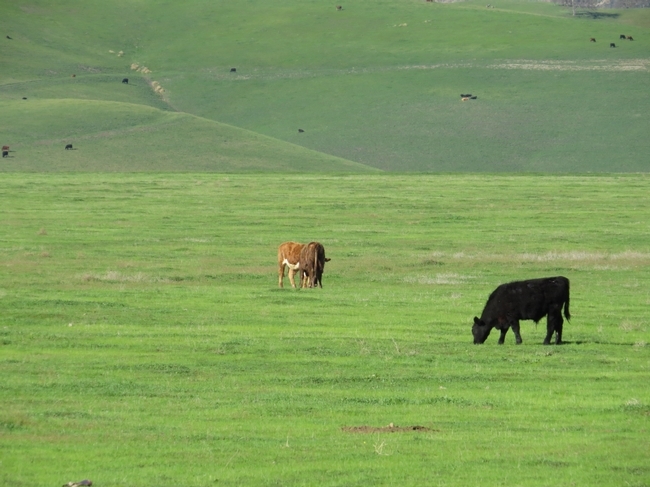February 15, 2020 - By Devii R. Rao, Acting San Benito County Director and Area Livestock and Natural Resources Advisor - Thanks to generous support from the newly formed California Cattle Council, UC Cooperative Extension will begin conducting a study to estimate how much fuel livestock consume across California and whether grazing decreases wildfire speed and intensity. Livestock grazing is the most widespread (and often the only feasible) management practice to reduce fire hazard from herbaceous fuels in California rangelands. Despite that, many public land management agencies do not allow livestock grazing on their lands. A study from 1983 found that the rate of combustion of grazed grasslands was reduced by 58%, but there is a dearth of research in this area. As we confront more frequent and devastating wildfires, we need better information about the effects of grazing on fire fuels in California.
We will use rangeland cattle movements from state brand inspection data, data from the United States Department of Agriculture's (USDA) Agricultural Census, and County Crop Reports to estimate tons of forage (fuel) consumed by California livestock. We will combine these datasets and others to estimate if/how grazing influences how wildfire moves across the landscape. We expect that additional livestock grazing, especially at the wildland urban interface (WUI) could drastically reduce the speed and intensity of fire, providing firefighters far greater time to respond to wildfire. Results from our study will be available this summer.
Please feel free to contact me at drorao@ucanr.edu if you have questions about this project.

Source: UC ANR
